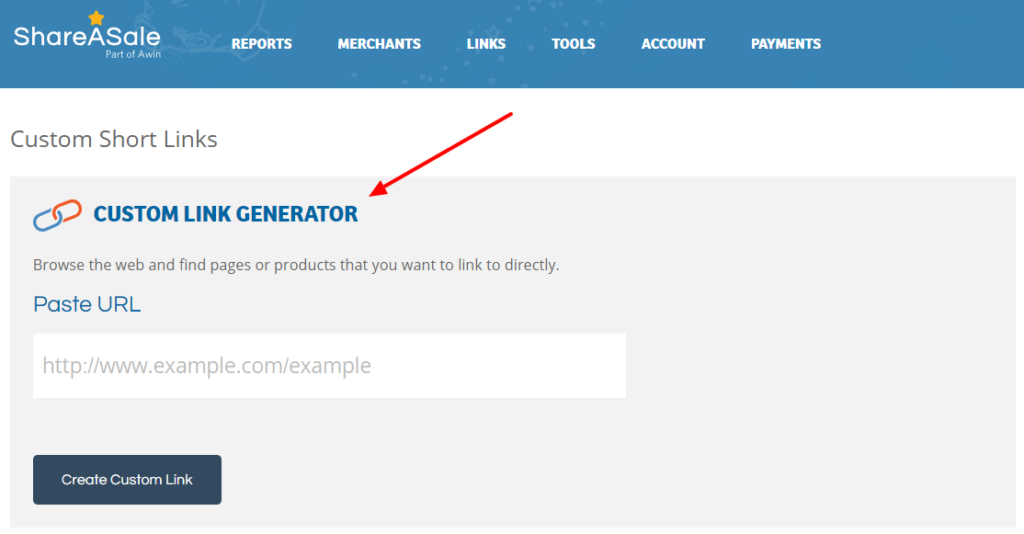 Are you ready to get your affiliate program off the ground? According to Rosemarie Spiher, now is the best time for this launch — so your timing is perfect. However, there are things more important than timing, and we consider thorough preparation to be one of them.
Are you ready to get your affiliate program off the ground? According to Rosemarie Spiher, now is the best time for this launch — so your timing is perfect. However, there are things more important than timing, and we consider thorough preparation to be one of them.
Before you launch, you need to make sure everything is perfect, with all i’s dotted and t’s cross. Launching too quickly is one of the 8 mistakes to avoid when setting up an affiliate marketing program. Although you can’t wait to see your program go live and affiliates applying to join it, you should wait to test all components and sort out all the details.
If you launch your program too early, many affiliates looking at it will spot the problems. They will either not join, or remain your affiliates only by name, without actually promoting your products or services. You should not expect them to wait for you to solve your problems. They will most likely walk away and promote other merchants.
But don’t worry! Testing your program components and making sure you’re 100% ready for the launch is not that difficult. You can count on our help with it. In this very post, we will guide you through the process and explain everything in detail. Here comes our ultimate checklist to help you set yourself up for a successful affiliate program launch:
5 Components to Check Before the Program’s Launch
1. Affiliate Program’s Tracking Software
![]() By now, you’ve probably already joined an affiliate network and set up your merchant account, or chosen to go with other affiliate tracking software.
By now, you’ve probably already joined an affiliate network and set up your merchant account, or chosen to go with other affiliate tracking software.
If you haven’t done so yet, check out our post on Affiliate Marketing Tracking Software which explains everything you need to know about the tracking (and reporting) options and how they operate.
Before your affiliate program’s launch, you have to make sure that the tracking is properly installed and works as it should. It should be able to track visits and actions from any device or browser. If you allow other payment options besides credit card, like Google Pay or Paypal, you should make sure your software accurately tracks these transactions as well.
How you do that depends on the affiliate tracking solution you’ve chosen. If you’re running your program on an affiliate network, they will provide the technical support you need. They will also run test transactions — to ensure that your tracking works before allowing your program to go live.
If you run your affiliate marketing program in-house, testing your tracking software may be more challenging. Depending on the software you’ve chosen, you should be able to receive some technical assistance from the provider. If you have an affiliate program manager, they will know what to do.
You should not even consider an affiliate marketing program launch without adequate testing of your tracking software. Any failures could cost you affiliates, sales, and your reputation, so take your time to make sure that every qualified action will be adequately tracked and rewarded.
2. Automated Email Templates
 Many affiliate networks and in-house affiliate tracking software allow you to set up automated emails for your affiliates. Obviously, you should have these ready before your affiliate program’s launch. At AM Navigator, we believe personalization is key to securing good affiliate communication.
Many affiliate networks and in-house affiliate tracking software allow you to set up automated emails for your affiliates. Obviously, you should have these ready before your affiliate program’s launch. At AM Navigator, we believe personalization is key to securing good affiliate communication.
Therefore, instead of setting up standard automated emails to send to all affiliates, we recommend setting up templates that you can personalize for each affiliate. Even if you’re starting your affiliate program on a network that already sends automated messages, you should look into the possibility of tweaking them — to look as your own.
These emails are the first step to creating a close, long-lasting relationship with your affiliates. Therefore, pay them the desired attention and prepare them ahead of time. How many templates should you create, what should they include, and when should you send them?
Both Geno Prussakov in his Affiliate Management: An Hour a Day book, and Ryan Hindes in his post on Mistakes to Avoid When Launching a New Affiliate Program recommend having at least three email templates ready to send to publishers applying to join your program.
I. Application Receipt
This is the email you send to all publishers who apply to become your affiliates. In it, you should:
- Acknowledge receiving their application
- Reserve a period of time to review it and inform them of your decision
- Encourage them to contact you if they need to
An acceptable affiliate application response time would be of 48 hours. If you can review their application and get back to them within 24 hours, that’s even better. Don’t forget to include your contact details in your email, just in case one of the publishers wants to get in touch with you.
II. Application Denial
This is the email you send to publishers that you decide not to accept into your program. As Geno explains in his book, bad denial emails can hinder recruitment. To make sure that does not happen to you, it is important to:
- Explain the factors that have led to your decision
- Encourage the publisher to contest your decision and explain how they are planning to promote your products or services
- Express your willingness to reconsider your decision should the circumstances change
Otherwise put, you don’t want to close the door on potential affiliates. Instead, tell them what to improve, and encourage them to re-apply into the program when they have. A smartly denied application could one day bring you a super affiliate.
III. Application Approval
This is the email you send to let your new affiliates know that you’ve accepted them into your program. More than just a welcome email, it can be an effective affiliate activation tool, if you play your cards right. Here is what it should cover:
- Welcome message – It could include a personal message from the company’s executive or a simple phrase thanking the affiliate for their interest in your program and announcing them that their application has been accepted.
- Brief introduction of your program and company – Affiliates often apply into several programs at the same time. Help them remember yours: what you sell, what commissions you pay, cookie life, etc.
- Performance incentives – If you have followed our advice to include performance incentives in your affiliate marketing program’s payment terms, don’t hesitate to let your new affiliates know of those incentives.
- Ready-to-use affiliate links and other creatives – Encourage your new affiliates to start promoting your products and services immediately by providing them with ready-to-use text links and banners that they can simply copy and paste into their content or onto their website.
- New affiliate promo – Many merchants choose to offer special incentives to new affiliates, and we usually encourage this practice. You can think of it as a call to activation. Common examples include rewarding affiliates for posting your first links on their website, generating the first qualified actions, or importing your product data feeds. A useful incentive that will not necessarily cost you is extended cookie life. For example, if your usual cookie life is of 60 days, you can double it for cookies placed within the first month from activation.
- Additional info packet – Think of it as the toolkit that will help your affiliates promote your products and services. In it, you should provide additional information about your company, products, and customers (company mission and goals, buyer personas, bestseller lists, etc.). It should also explain what sets you apart from your competitors (unique selling proposition, awards or other recognitions, product highlights, features, and benefits). Perhaps the most important component of your affiliate marketing toolkit should be your best creatives: content samples (press release and product review samples), lists of keywords and taglines, images, etc.
Other Approval Emails
In his Affiliate Management: An Hour A Day, Geno recommends sending additional approval emails when affiliates need to apply for access to specific data feeds or functionalities, following this formula:
- Approval message
- Activation incentive
- Performance incentive
- Instructions and/or advice on how to make the most of the data feed or functionality they have gained access to.
He also provides examples of emails you can start from in order to develop your own.
3. Affiliate Program Support
 If you want your affiliate program to be successful, you will need a support base for it. You can start with as little as a link to your affiliate program page posted on your main website, an affiliate program landing page, and a dedicated email address. Let’s take a closer look at each of these elements:
If you want your affiliate program to be successful, you will need a support base for it. You can start with as little as a link to your affiliate program page posted on your main website, an affiliate program landing page, and a dedicated email address. Let’s take a closer look at each of these elements:
Affiliate Program Link
Your affiliate program should have at least a dedicated page on your website (if not a dedicated separate mini-site), and a link to it on your main website’s homepage. This is probably the easiest yet most underused affiliate recruitment method. Anyone visiting your website who considers promoting your products or services can find out how to do it.
Many merchants, including Amazon, prefer to place it in the website footer, along with the links to their informational pages, monetization offers, products, and support links. Other merchants, like SSL.com, included their affiliate program in the main menu of their website.

Affiliate Program Page Tips to Follow
- Make sure your link is visible and its anchor text is relevant for your affiliate program. The most commonly used terms are various forms of partner, affiliate, and associate.
- As soon as your program is live, test the link. The last thing you want is a broken link facing your potential affiliates with a sorry, we can’t find the page you are looking for
- Set up a landing page with a clear affiliate program description or a link to it (affiliate program bio).
- Make sure your program description covers the following: company description and link to main website, commission structure and tiers/levels breakdown, cookie life and other tracking methods information, statistics (EPC, conversion rate, average order value, etc.), availability of co-branded landing pages and data feeds, affiliate tools and other competitive advantages, restrictions or program agreement highlights.
- Don’t exceed 250 words. Your goal is to entice potential affiliates to find out more or sign up, not bore them to death or scare them away.
Depending on the complexity of your affiliate marketing program and how serious you are about making it work, you should take Geno’s advice and consider creating a mini-site for it.
Affiliate Program Mini-Site Basics
Uploading a large inventory of affiliate creatives, embedding affiliate tools, and posting regular updates and tutorials could slow down your merchant website. Moreover, a dedicated website, with a blog attached to it, could help you attract publishers looking for affiliate programs to join online. The map of the ideal affiliate program website looks like this:
- Program details
- Program agreement
- Frequently asked questions
- Tips and ideas
- Creatives
- Blog
- Contact
4. Announcement of the Affiliate Program’s Launch
 Just as you spread the word when you launch a new product or service, adopt new technologies, or attend an important industry event, you should announce your affiliate program’s launch.
Just as you spread the word when you launch a new product or service, adopt new technologies, or attend an important industry event, you should announce your affiliate program’s launch.
You can do so in the newsletters you send to your customers, suppliers, and service providers, on specialty forums, affiliate program directories, through press releases, etc. Your announcement should resemble your affiliate program bio, but make sure to adjust it to the new audience.
Some of your readers may know nothing about your company or affiliate marketing, so your announcement should educate them and stir their interest. Here are the must-have elements for any affiliate program launch announcement:
- Merchant description
- Program details
- Statistics
- Calls to action
As far as calls to action are concerned, your main goal is to convince readers to apply to become your affiliates. This is what primary calls to action do.
When these fail or your readers are just not ready to follow them, you should have secondary calls to action in place, like invitations for your readers to contact you anyway. There are also post-primary calls to action you can use in your affiliate approval emails to activate affiliates.
To make sure your calls to action are effective, have them answer a simple question: what’s in it for the affiliate?
5. Creatives Inventory
 We’ve covered affiliate creatives in depth before, and you should already have your inventory ready. However, before your affiliate program’s launch, you should double-check the availability of your keywords lists, bestseller lists (generic, seasonal, category-specific), banners, videos, and any other creatives your affiliates will have access to.
We’ve covered affiliate creatives in depth before, and you should already have your inventory ready. However, before your affiliate program’s launch, you should double-check the availability of your keywords lists, bestseller lists (generic, seasonal, category-specific), banners, videos, and any other creatives your affiliates will have access to.
If you’re offering your affiliates the tools to generate their own creatives, put those tools to the test and provide clear instructions on how your affiliates should use them. Most affiliate networks have custom link-generating tools available (as the below screenshot exemplifies it).

The last thing you want is to have them use broken text links or promote products you no longer sell. One case that drew my attention was that of Money Done Right, an affiliate website with huge potential and quality content, but which seems to waste resources on broken links that will never get them the commission they deserve (see their reviews of H&R Block, Tally, and more).
As a merchant, you may think you can profit from readers looking up your products or services online. However, without commissions to motivate them, your affiliates will eventually stop promoting your products or services. Their negative experience may even reflect on your program’s reputation.
Final Advice for Your Affiliate Program’s Launch
By now, you’ve hopefully checked the components discussed above and prepared your affiliate program’s launch. However, before you let it go live, there is one more question you should answer:
Who’s Going to Manage Your Affiliate Marketing Program?
We’ve already explained that forgetting about the driver would be a huge mistake for your affiliate program’s launch. We also covered the basics of affiliate marketing program management on several occasions, so you know what the stake is. If you haven’t yet found a competent and experienced affiliate program manager, now would be the best time to do it.
Not only will they take over all the above hassles and responsibilities, but they will steer your program in the right direction, by recruiting, activating, and motivating affiliates, managing tracking, payments, and reporting, and proposing program performance-boosting strategies.
You have two options: hire or outsource. Having an in-house affiliate manager may seem like a great option. However, finding one with experience in your particular line of business can be challenging. Even if you succeed, their services may cost a fortune. If you settle for an inexperienced manager, you may have to postpone your affiliate program’s launch indefinitely.
A simpler, more effective, and often more affordable option is to work with an outsource program management agency like ours. You can even combine the two options and have the affiliate management company complement your affiliate manager’s efforts. At AM Navigator, we’ve successfully launched, managed, and audited numerous programs like yours.
We can help you, too. Get in touch now, and we’ll gladly use our knowledge and experience to help you prepare your affiliate program’s launch and secure its success!